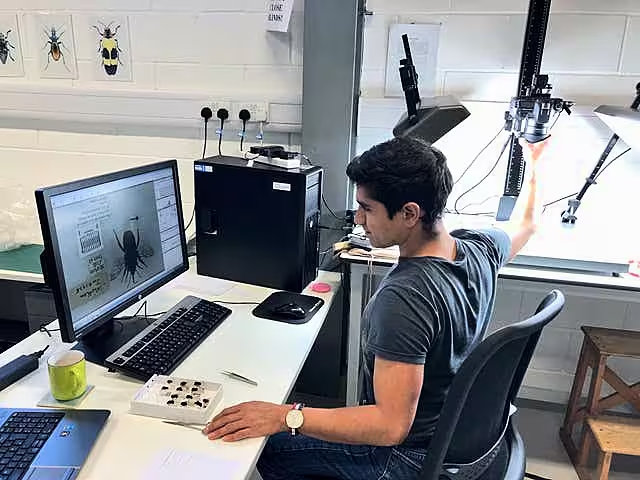Bees have become increasingly stressed by climate change over the past 100 years, museum collections indicate.
An analysis of bumblebee wings from a network of UK institutions shows signs of stress linked to conditions getting hotter and wetter.
As well as revealing what is linked to stress in bees in the past, the study can help predict when and where bees will face most stress and potential decline in the future, researchers suggest.
Scientists from Imperial College London and the Natural History Museum have published two papers analysing UK bumblebee populations.
The first investigated the body shapes of bee specimens dating back to 1900.
Using digital images, researchers looked at asymmetry in bumblebee wings as an indicator of stress.
High asymmetry – very differently shaped right and left wings – indicated the creatures experienced stress during development – an external factor that affected their normal growth.
Looking at four UK bumblebee species, the group found evidence of stress getting higher as the century progressed from its lowest point around 1925.
Further analysis, published in the Journal of Animal Ecology, showed that each species displayed a consistently higher proxy of stress in the latter half of the century.
When assessing the climate conditions during the year of collection, the team found that in hotter and wetter years bees showed higher wing asymmetry.
Co-author Aoife Cantwell-Jones, from the department of life sciences (Silwood Park) at Imperial College London, said: “By using a proxy of stress visible on the bee’s external anatomy and caused by stress during development just days or weeks before, we can look to more accurately track factors placing populations under pressure through historic space and time.”
Co-author Dr Andres Arce, now at the University of Suffolk, added: “Our goal is to better understand responses to specific environmental factors and learn from the past to predict the future.

“We hope to be able to forecast where and when bumblebees will be most at risk and target effective conservation action.”
Senior co-author Dr Richard Gill, also from Imperial, said: “With hotter and wetter conditions predicted to place bumblebees under higher stress, the fact these conditions will become more frequent under climate change means bumblebees may be in for a rough time over the 21st century.”
In a second study, published in Methods in Ecology & Evolution, the team successfully sequenced the genomes of more than a hundred bumblebee museum specimens dating back more than 130 years.
They used methods typically used for studying woolly mammoths and ancient humans on an insect population for the first time.
As well as providing a new reference genome, the team will now use this data to study how bee genomes have changed over time, gaining an understanding of how whole populations have adapted – or not – to changing environments.
Co-author Dr Victoria Mullin, from the Natural History Museum, said: “Museum insect collections offer an unparalleled opportunity to directly study how the genomes of populations and species have been affected by environmental changes through time.
“However, they are a finite resource and understanding how best to utilise them for genetic studies is important.”







